Features From the Issue
-
Features
Emblems for the Afterlife
Tomb paintings hold clues to the ancient Egyptian desire to bring order out of chaos
 (Linda Evans/Australian Center for Egyptology, Macquarie University, Sydney)
(Linda Evans/Australian Center for Egyptology, Macquarie University, Sydney) -
Features
Global Cargo
Found in the waters off a small Dutch island, a seventeenth-century shipwreck provides an unparalleled view of the golden age of European trade
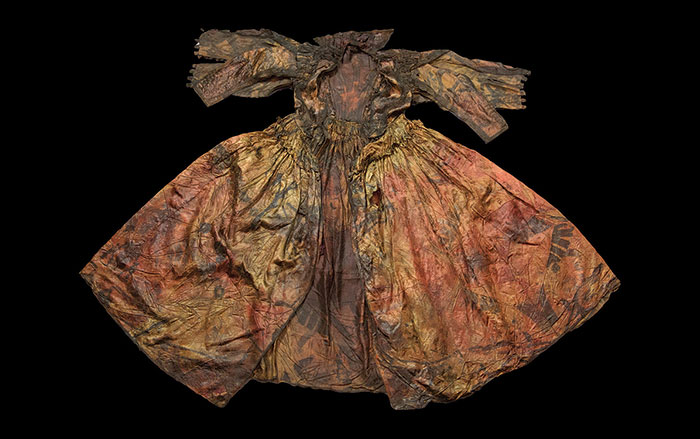 (Kees Zwaan/Courtesy Province of North Holland)
(Kees Zwaan/Courtesy Province of North Holland) -
Features
Cultivating an Arid Landscape
Excavations in a Byzantine village in Israel are raising questions about how and why desert agriculture thrived—and then disappeared
-
Features
A Sanctuary’s Final Farewell
Excavations at Casas del Turuñuelo tell a tale of ritual destruction in the mythical land of Tartesso
-
Features
Desert Orca
A geoglyph recently discovered in southern Peru may date to the beginning of the renowned Nazca Lines tradition
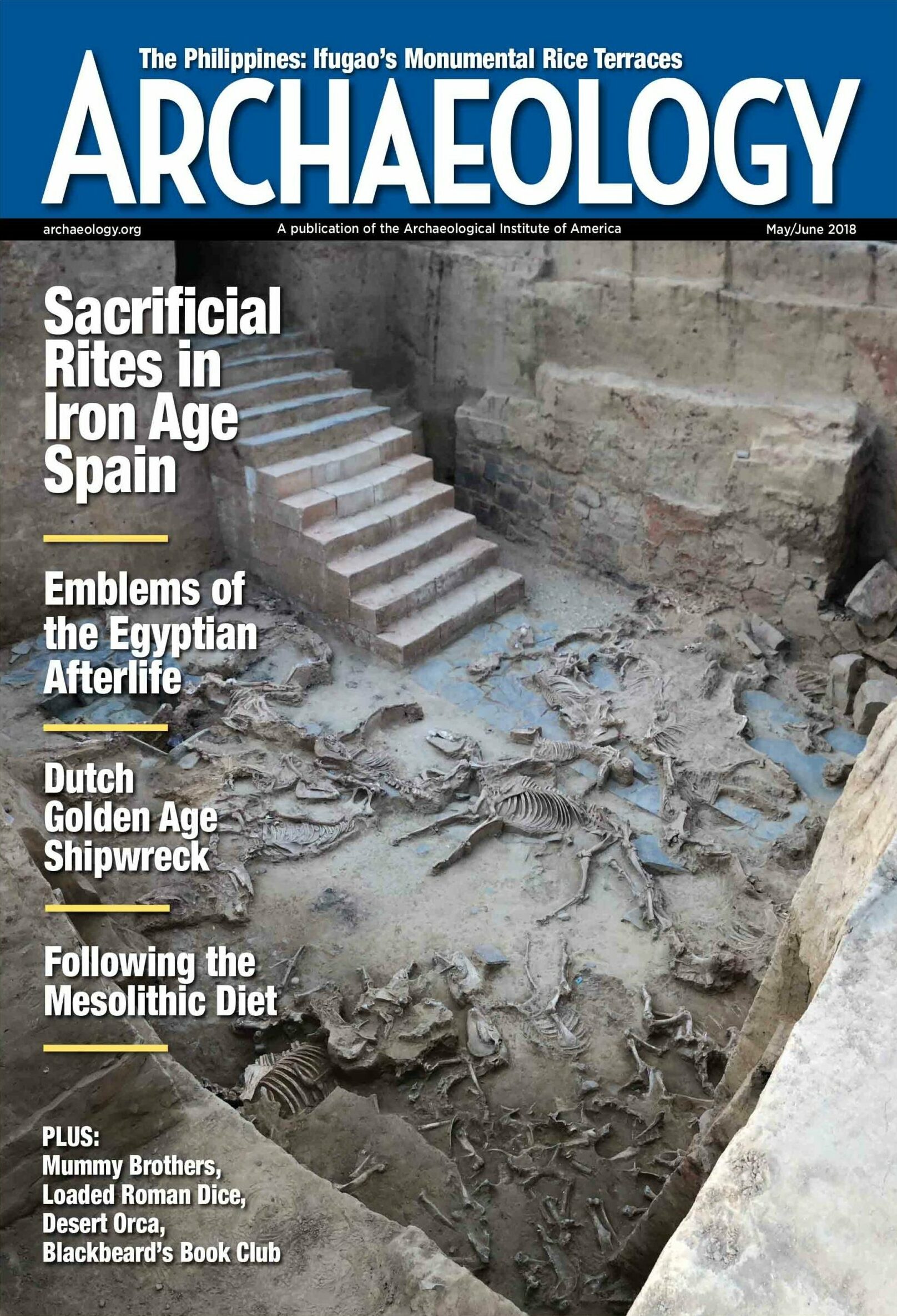
Letter From the Philippines
Letter From the Philippines
One Grain at a Time
Archaeologists uncover evidence suggesting rice terraces helped the Ifugao resist Spanish colonization

Artifact
Artifacts
Roman Sundial
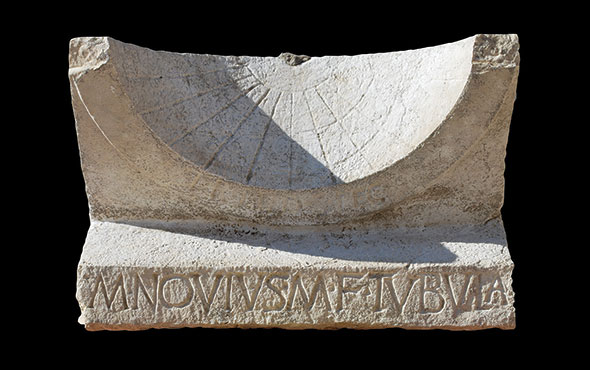
Digs & Discoveries
-
Digs & Discoveries
Conquistador Contagion
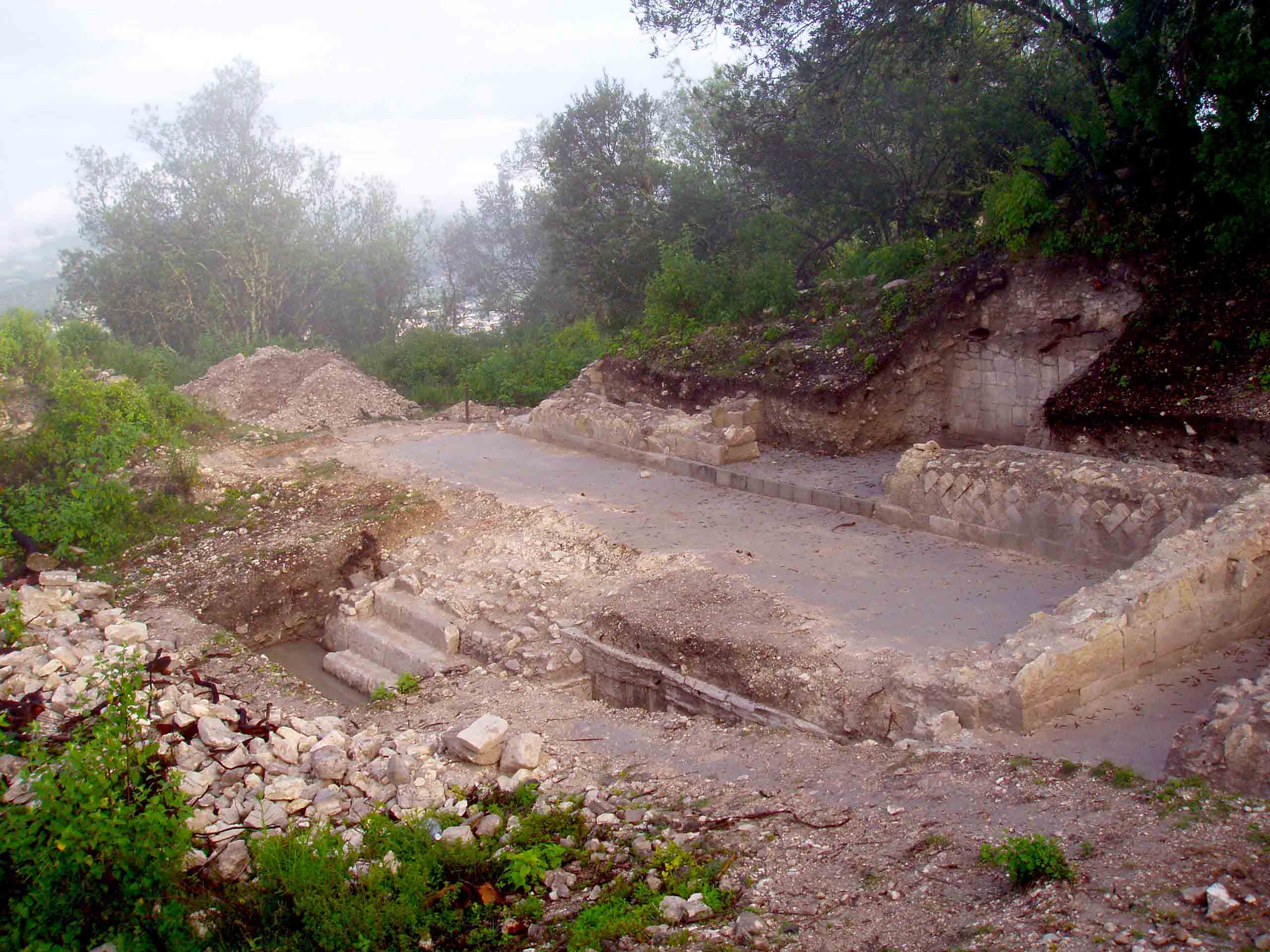 (Christina Warinner. Image courtesy of the Teposcolula-Yucundaa Archaeological Project)
(Christina Warinner. Image courtesy of the Teposcolula-Yucundaa Archaeological Project) -
Digs & Discoveries
Circle of Life
 (Courtesy Mauricio Marat/INAH)
(Courtesy Mauricio Marat/INAH) -
Digs & Discoveries
Norwegian Knight
 (NIKU)
(NIKU) -
Digs & Discoveries
A Night Out in Leicestershire
 (© ULAS)
(© ULAS) -
Digs & Discoveries
The Pirate Book Club
 (N.C. Department of Natural and Cultural Resources)
(N.C. Department of Natural and Cultural Resources) -
Digs & Discoveries
Alternative Deathstyles
 (Courtesy of E. Trinkaus and K. Gavrilov)
(Courtesy of E. Trinkaus and K. Gavrilov) -
Digs & Discoveries
Afterlife Under the Waves
 (Florida Department of State)
(Florida Department of State) -
Digs & Discoveries
No Dice Left Unturned
 (© Gilles Mermet/ Art Resource, NY, HIP/Art Resource, NY, Courtesy Jelmer W. Eerkens)
(© Gilles Mermet/ Art Resource, NY, HIP/Art Resource, NY, Courtesy Jelmer W. Eerkens) -
Digs & Discoveries
A Mark of Distinction
 (Matthew Velasco/Current Anthropology 2018)
(Matthew Velasco/Current Anthropology 2018) -
Digs & Discoveries
Early Buddhism in India
 (Courtesy Archaeological Survey of India)
(Courtesy Archaeological Survey of India) -
Digs & Discoveries
A Bronze Age Landmark
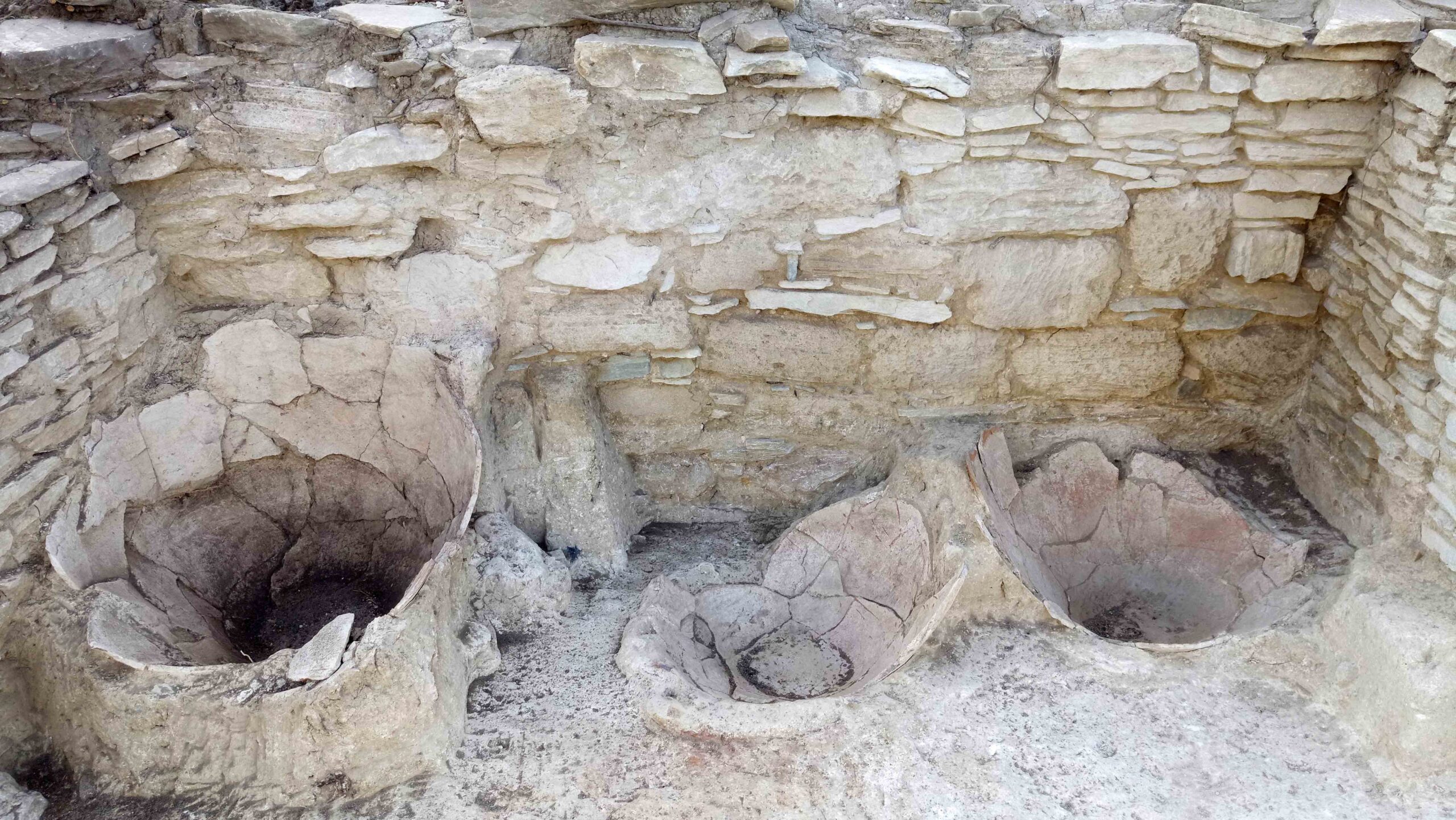 Michael Boyd/The Cambridge Keros Project
Michael Boyd/The Cambridge Keros Project -
Digs & Discoveries
Time’s Arrow
 (Government of Yukon)
(Government of Yukon) -
Digs & Discoveries
We Are Family
 (Courtesy The Manchester Museum)
(Courtesy The Manchester Museum)
Off the Grid
Off the Grid May/June 2018
Fort Rock Cave, Oregon
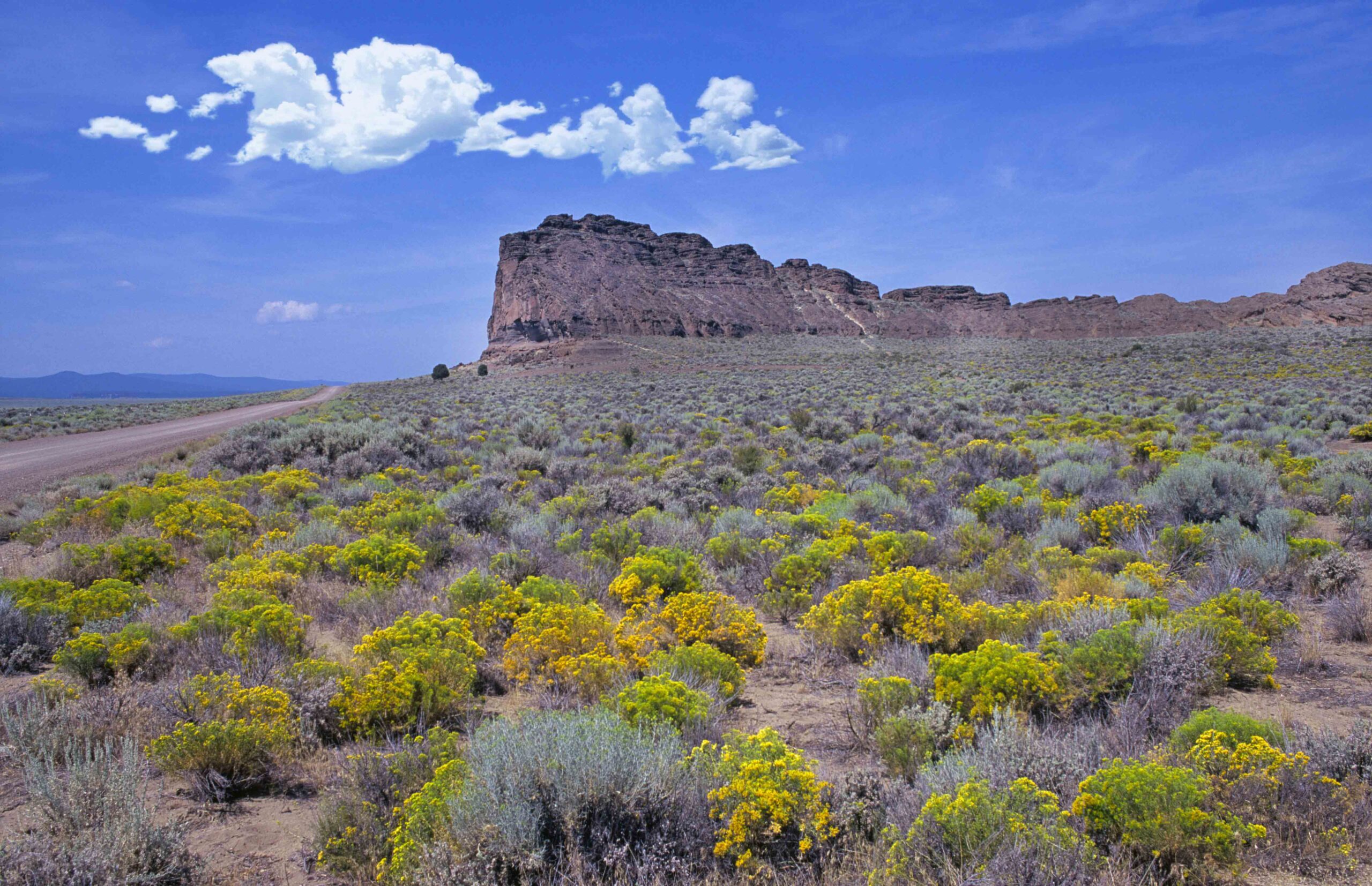
Around the World
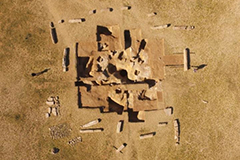
MONGOLIA

MONGOLIA: The Dongoin Shiree steppe in eastern Mongolia contains a unique 8th-century funerary monument that suggests the region was an important power center during the Second Turkic Khaganate. A stone sarcophagus was placed at the center of an earthen mound and surrounded by 14 stone pillars inscribed with Turkic runes. They comprise one of the largest collections of Turkic inscriptions ever found in Mongolia. One passage reveals that the deceased individual was an important and highranking official during the reign of Bilge Khagan (r. 716–734).

KAZAKHSTAN

KAZAKHSTAN: It has long been thought that all modern domesticated horses are descended from those first tamed by the Botai culture in Kazakhstan about 5,500 years ago. Surprisingly, analysis of ancient DNA from 20 Botai horses has shown that they are not ancestors of our modern horses, but of Przewalski’s horses, considered to be the last remaining wild horses. If Przewalski’s horses are, in fact, not wild, but feral descendants of the Botai, it would mean that there are no longer any truly wild horses in existence today.

ETHIOPIA

ETHIOPIA: Footprints left by children as young as 12 months offer a glimpse of family dynamics 700,000 years ago. The prints at Melka Kunture were left by a group of Homo heidelbergensis individuals gathered around a shallow pool, where evidence of stone tool knapping and the butchered carcass of a hippopotamus were also found. The small children’s footprints reveal how they tagged along as the adults carried out their daily activities, perhaps to observe and learn important survival skills such as hunting and toolmaking.

